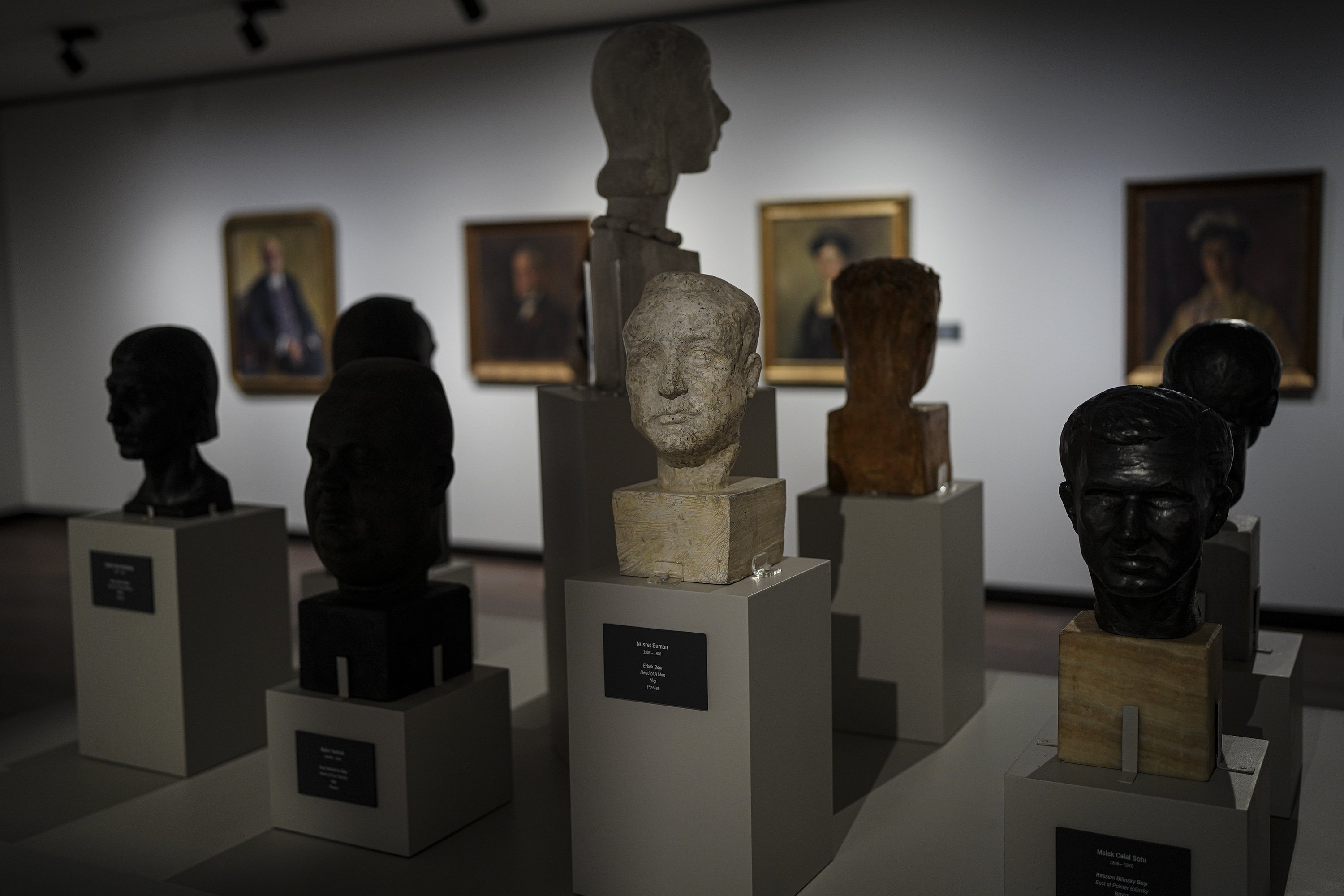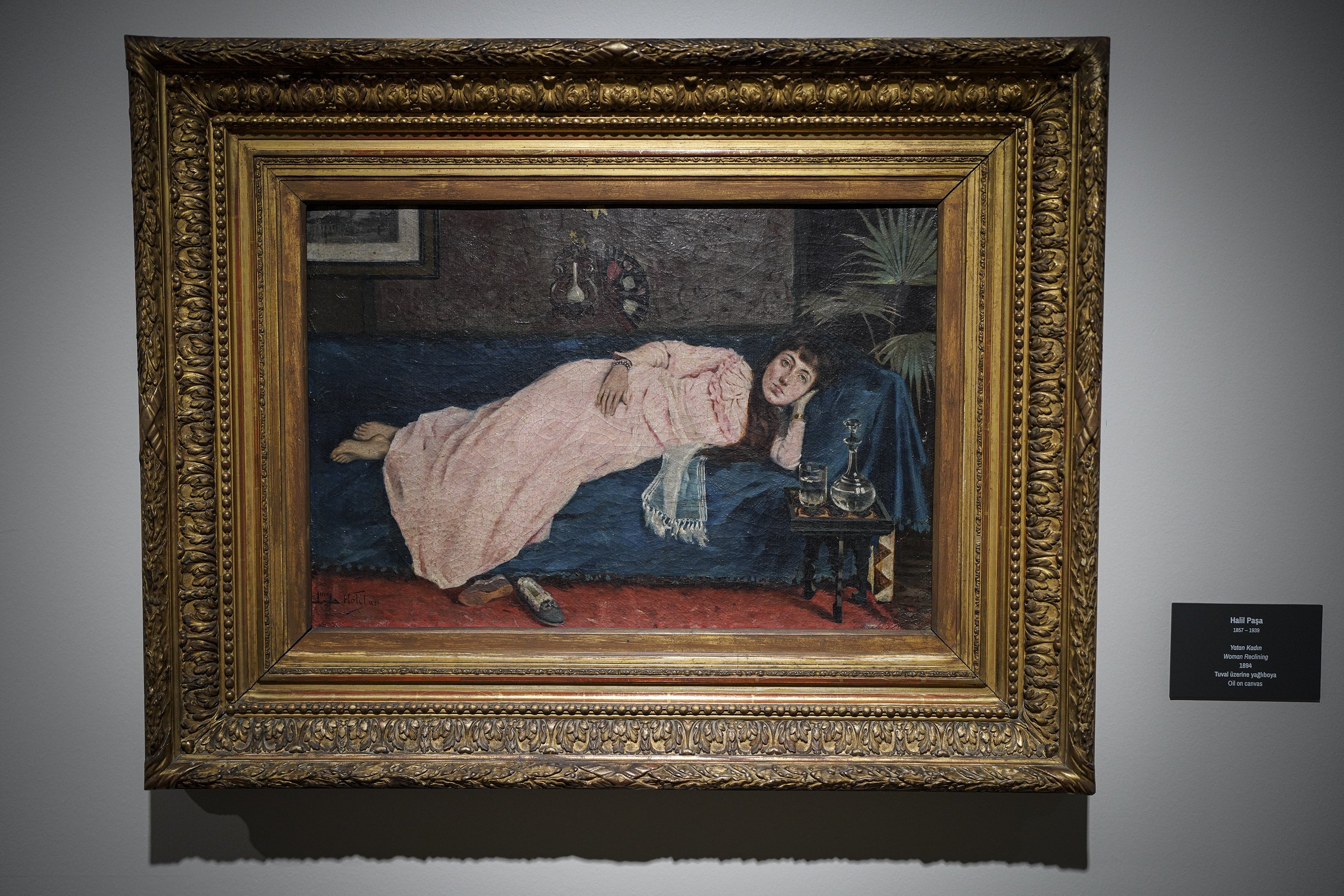© Turkuvaz Haberleşme ve Yayıncılık 2026
One of Türkiye's greatest and encompassing museums, the Istanbul Museum of Painting and Sculpture, welcomes thousands of visitors, offering a journey through the 150-year history of Turkish painting and sculpture.
Opened in September with the participation of President Recep Tayyip Erdoğan, the museum has approximately 12,000 works of art in its collection including paintings, calligraphy, ceramics, icons and one installation, and will be permanently open for art goers. It was opened as Türkiye's first fine arts museum in 1937 in the Apartment of the Heir Apparent at Dolmabahçe Palace by the orders of the republic's founder Mustafa Kemal Atatürk, with affiliation to the Istanbul State Academy of Fine Arts, today's Mimar Sinan Fine Arts University.

The collection of the Istanbul Museum of Painting and Sculpture, which has been carefully preserved by Mimar Sinan University of Fine Arts since 1937, reflects the visual memory of the Westernization period of Ottoman art, as well as the modernization and modernism of the Turkish republic.
Therefore, the museum’s permanent exhibition displays as many works as possible to make all the unseen aspects of rich and valuable history available. The museum’s collection, which covers the visual past of Turkish art, will generate a benchmark for the plastic arts in Türkiye.
The collection started with the Elvah-ı Nakşiye, which roughly refers to the "collection of paintings" and grew with the addition of nearly 300 works gathered from the ministries and government offices of the period, together with the works taken from Dolmabahçe Palace, Topkapı Palace Museum, and the 50 Years of Turkish Painting Exhibition. Through the purchases and donations acquired over the years, the museum’s collection presently contains the most outstanding examples of Turkish art.
Since the Apartment of the Heir Apparent was a historical building, the Turkish General Assembly Council decided to empty the building in 2012 for renovation, and the collection was relocated to the Customs Warehouse (Antrepo) No. 5 in Istanbul's Fındıklı. The Customs Warehouse building, a landmark of modern architecture allocated to the Mimar Sinan University of Fine Arts, which was renovated by the architect Emre Arolat, was transformed into a modern venue for the museum.

The curators of the permanent exhibition are Dr. Burcu Pervanoğlu and Dr. Ayşe Köksal with Yeşim Demir Pröhl as the exhibition designer. The exhibition has a total of 749 artworks, including 663 paintings and 85 sculptures, and the pieces have been arranged throughout 34 exhibition halls in thematic and chronological order, starting from the first floor up to the third floor.
The first floor of the permanent exhibition starts with selections on genres such as “Painting from Photography,” “Interpretation of Nature in Ottoman Painting,” “Ottoman Figure Painting,” “Still-Life in Ottoman Painting,” “The Academy of Fine Arts for Women and Its First Students,” “The 1914 Generation: Portraiture and Self-Portraiture,” “The 1914 Generation’s Approach to Landscape,” “Late Cubism and Art Deco in the Early Turkish Republic” and ends with “Sculpture of Republican Era."
On the second floor, the exhibition continues with modernist pieces.
The exhibition continues on the third floor with “1950-1970 Figurative Trends,” “Satire in Turkish Art Since the 1960s,” “Neşet Günal and Nedim Günsür,” “The 1968 Generation,” “Searching for Alternatives,” “Painting in the 1970s,” and “Art since 1980s."

In addition to the permanent exhibition, the largest “Osman Hamdi Bey” collection in Türkiye, with 17 paintings as well as documents, certificates, diplomas and insignia curated by Dr. Zeynep Inankur, is on display in the 301 exhibition hall on the third floor. The last exhibition halls on the third floor bring together the “Academy of Fine Arts Calligraphy Collection” with “Calligraphic Trends” in the modernist genre of Turkish painting.
The museum can be visited every day except Mondays.
